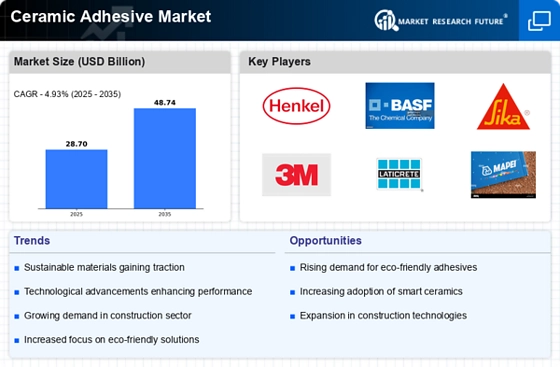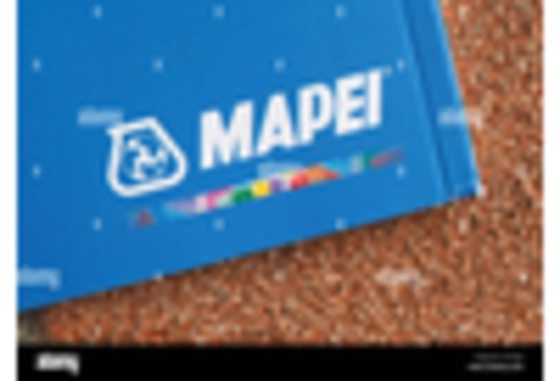The Ceramic Adhesive Market is currently characterized by a dynamic competitive landscape, driven by increasing demand across various sectors such as construction, automotive, and electronics. Key players are actively engaging in strategies that emphasize innovation, sustainability, and regional expansion. For instance, Henkel AG (DE) has been focusing on enhancing its product portfolio through the development of eco-friendly adhesives, which aligns with the growing consumer preference for sustainable solutions. Similarly, BASF SE (DE) is leveraging its extensive research capabilities to introduce advanced adhesive technologies that cater to specific industry needs, thereby solidifying its market position.
In terms of business tactics, companies are increasingly localizing manufacturing to reduce lead times and optimize supply chains. This approach appears to be particularly effective in a moderately fragmented market where numerous players vie for market share. The collective influence of major companies, such as Sika AG (CH) and 3M Company (US), is shaping the competitive structure, as they invest in digital transformation initiatives to enhance operational efficiency and customer engagement.
In August 2025, Sika AG (CH) announced the acquisition of a regional adhesive manufacturer, which is expected to bolster its market presence in Eastern Europe. This strategic move not only expands Sika's production capabilities but also enhances its distribution network, allowing for quicker response times to local market demands. Such acquisitions are indicative of a broader trend where companies seek to consolidate their positions through strategic mergers and acquisitions.
In September 2025, 3M Company (US) launched a new line of ceramic adhesives designed specifically for high-temperature applications in the automotive sector. This product introduction reflects 3M's commitment to innovation and its ability to respond to evolving industry requirements. By focusing on niche markets, 3M is likely to differentiate itself from competitors, thereby enhancing its competitive edge.
Furthermore, in July 2025, Laticrete International, Inc. (US) entered into a partnership with a leading technology firm to integrate AI-driven solutions into its adhesive manufacturing processes. This collaboration aims to optimize production efficiency and reduce waste, aligning with the industry's shift towards sustainability. Such partnerships are becoming increasingly common as companies recognize the importance of technological integration in maintaining competitiveness.
As of October 2025, the Ceramic Adhesive Market is witnessing trends that emphasize digitalization, sustainability, and technological integration. Strategic alliances are playing a crucial role in shaping the competitive landscape, as companies collaborate to enhance their product offerings and operational capabilities. Looking ahead, it is anticipated that competitive differentiation will increasingly pivot from price-based strategies to innovation, technology adoption, and supply chain reliability, reflecting the evolving demands of the market.


















Leave a Comment